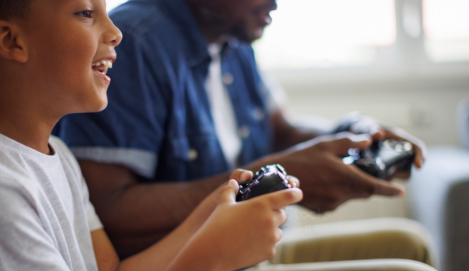How to Handle Toxic Players in Online Games: Effective Strategies for Maintaining a Positive Gaming Experience
Online gaming should be fun, not frustrating. Yet many players regularly face toxic behavior that can ruin the experience. From verbal abuse to intentional sabotage, toxic players are unfortunately common in gaming communities.
The most effective way to handle toxic players is to avoid engaging with them completely. When someone starts being negative in chat or voice, use the mute or block features available in most games. These tools exist specifically to protect your gaming experience and mental well-being.
Remember that toxic players feed on reactions. By not responding to their provocations, you take away their power. Focus instead on building positive connections with friendly players who share your values. Gaming is meant to be enjoyable, and you have the right to protect that enjoyment.
Understanding Toxicity in Online Gaming
Toxic behavior can seriously harm your gaming experience and mental health. These negative interactions happen in almost all multiplayer games and come in many forms that affect both individual players and entire communities.
Defining Online Toxicity
Toxic behavior in online games refers to harmful actions that ruin the gaming experience for others. It goes beyond normal competitive play.
Think about the player who constantly insults teammates after mistakes. Or the one who deliberately sabotages matches when losing. These actions cross the line from competition to toxicity.
What makes something toxic isn’t always clear-cut. Killing the same player repeatedly (known as “camping”) might be allowed by game rules but is often considered toxic by the community.
The definition can change depending on the game’s culture and community standards. What’s acceptable trash talk in one game might be seen as harassment in another.
Patterns of Toxic Behavior
Toxic behavior typically follows recognizable patterns across different games.
Verbal harassment is most common – insults, hate speech, and aggressive language in voice or text chat. This often targets newer players or those performing below expectations.
Griefing involves deliberately disrupting gameplay. This includes team-killing, blocking teammates, or intentionally losing to ruin others’ experience.
Cyberbullying takes harassment further, with persistent targeting of specific players across multiple matches or platforms.
Rage quitting and AFK (away from keyboard) behavior harm teams by leaving them short-handed. This often happens when a player gets frustrated with game progress.
Impact on Players and Communities
Toxic environments drive players away from games they might otherwise enjoy. A 2023 survey showed that 22% of players quit games permanently due to negative interactions.
Your mental health can suffer from regular exposure to toxicity. Anxiety, stress, and decreased self-confidence are common responses to hostile gaming environments.
For game developers, toxicity means lost revenue when players leave. Companies now invest millions in moderation systems and positive reinforcement mechanics.
Community health deteriorates as toxicity spreads. New players hesitate to communicate or participate fully out of fear of becoming targets.
The most concerning impact? Normalization. When toxicity becomes expected, players either adopt these behaviors themselves or simply accept them as unavoidable aspects of gaming culture.
Strategies for Managing Toxic Behavior
Dealing with toxic players requires a multi-layered approach. Game companies and players both have tools at their disposal to create healthier gaming environments.
Role of Community Managers and Moderators
Community managers are the frontline defenders against toxicity. These professionals monitor game spaces and enforce community guidelines consistently. They don’t just punish bad behavior—they set the tone for the entire community.
Effective moderators often participate in the community rather than just policing it. This builds trust with players. When players see active moderation, they’re more likely to follow the rules.
The best community teams create clear, visible guidelines that explain expectations. They communicate openly about enforcement actions without revealing personal details about cases. Some games now employ AI tools to assist human moderators, catching toxic language before it reaches other players.
Moderators can also highlight positive player interactions, creating role models for the community to follow.
Effective Use of Reporting Systems
Reporting systems work when you use them properly. When you encounter toxic behavior, report it immediately with specific details about what happened.
Most games allow you to:
- Submit chat logs as evidence
- Report voice chat abuse
- Flag inappropriate usernames or profiles
- Categorize the type of violation
Pro tip: Take screenshots of toxic interactions as additional evidence.
Many players don’t report because they think “nothing will happen.” But modern systems actually track patterns of reports. Even if one report doesn’t trigger action, multiple reports against the same player will.
Your reports help protect others. Game companies use reporting data to improve their toxicity detection algorithms and identify problem areas in their communities.
Implementing Ban Strategies
Game companies use different ban approaches based on the severity and frequency of toxic behavior.
Types of bans commonly used:
- Chat restrictions (muting for hours or days)
- Temporary game bans (24 hours to weeks)
- Permanent account bans
- Hardware bans (preventing new account creation)
The most effective systems use escalating consequences. First-time offenders might receive warnings, while repeat offenders face stronger penalties.
Some games implement “low priority queues” where toxic players only play with other toxic players. This creates natural consequences without removing access completely.
You’ll notice the best games clearly communicate why a ban occurred. This helps players understand boundaries and reduces repeat offenses. Companies like Riot Games and Blizzard have found that transparency in ban decisions actually reduces overall toxicity rates.
Improving Player Interactions and Teamwork
Building positive player interactions is essential for enjoying online games and creating a healthier gaming environment. The right approach can transform toxic experiences into rewarding social interactions.
Encouraging Positive Gameplay
Start by leading by example. Use your mic or chat to give clear, helpful callouts during matches. Keep communication focused on the game objectives rather than criticizing teammates’ mistakes.
When someone makes a good play, acknowledge it. A simple “nice shot” or “great save” goes a long way in building team morale.
If you’re playing with new players, offer guidance instead of criticism. Remember when you were learning the game? A little patience can turn a struggling teammate into a valuable ally.
Consider using humor to defuse tense situations. A well-timed joke can reset the mood when things get heated during competitive matches.
Incentivizing Sportsmanship
Look for games that offer sportsmanship rewards. Many multiplayer games now include endorsement systems, badges, or reputation points for positive behavior.
These reward systems aren’t just cosmetic—they often provide tangible benefits like bonus experience or special matchmaking priorities.
Create personal challenges around teamwork. Try setting goals like “help three teammates complete their objectives” or “give five genuine compliments” during your gaming session.
Share resources generously. In games where items or currency can be traded, helping others can build goodwill and create a more collaborative atmosphere.
Fostering a Collaborative Community
Join or create a gaming community that values respect. Discord servers, forums, and social media groups can help you find like-minded players who prioritize teamwork.
Establish clear expectations when playing with regular teammates. A simple conversation about communication styles can prevent misunderstandings before they happen.
Consider playing in organized tournaments or leagues where sportsmanship is enforced. Many competitive communities have codes of conduct that promote healthy competition.
Use the tools provided by game developers. Friend lists, team finders, and guild systems exist to help you build a positive network of players who share your values.
Remember that your actions influence the community. Each positive interaction you initiate makes the gaming space better for everyone.
Technological Solutions to Combat Toxicity
Gaming companies now use advanced tech tools to fight toxic behavior. These solutions help create safer spaces without needing constant human moderation.
Machine Learning and AI Moderation
Machine learning algorithms can scan chat messages in real-time to filter out offensive content. These systems learn from millions of examples to identify harmful language patterns.
You’ll notice AI gets smarter over time. It can detect subtle forms of harassment that traditional keyword filters miss.
Many games now use contextual AI that understands the difference between friendly banter and actual toxicity. This prevents over-filtering while still catching genuinely harmful content.
Voice chat moderation is also improving. New AI can analyze tone and context in voice communications to flag problematic behavior.
Automated Systems for Identifying Toxicity
Automated reporting systems make it easier for you to flag toxic players. One click, and the incident gets recorded and reviewed.
Behavior scoring tracks patterns across multiple games. Players with consistently negative behavior receive warnings or restrictions before permanent action is taken.
Some games implement reputation systems that match players with similar behavior scores. This creates a natural consequence where toxic players end up playing together.
Heat maps help developers identify problem areas in games where toxicity spikes. This allows targeted improvements to game mechanics that might unintentionally encourage negative behavior.
Enhancing Performance to Improve Attitudes
- Frustration from poor game performance can also fuel toxic behavior. Players struggling with lag or low frame rates are more likely to lash out. Optimizing your system can make a big difference in your gaming experience—and your interactions with others. If you’re looking to boost performance and reduce in-game stress, you can discover secret FPS boosters at Battlelog These tools are designed to help gamers achieve smoother gameplay, which can lead to a more relaxed and enjoyable environment for everyone.
Dealing with False Reports and Disruptive Players
Cross-verification systems compare multiple player reports to reduce false positives. This prevents abuse of the reporting system itself.
You’ll find appeal processes in most modern games. These let wrongfully penalized players present their side when automated systems make mistakes.
Temporary restrictions often work better than immediate bans. They give disruptive players a chance to reflect on their behavior without permanently losing access.
Some games now use positive reinforcement alongside penalties. Players receive rewards for maintaining good behavior over time, creating incentives for positivity.

